Terezin burial ground
Burial mound from the 2nd century BC – 1st century AD. Here have been made very interesting finds of Hun culture including a body of a partly mummified woman with rich garments and jewelry including a belt buckle with has been nicknamed “Natasha’s iPhone” due to its similarity to a phone case. The burial mound is endangered by the flooding due to hydropower plant and there are on-going salvage excavations to extract the information before it is lost.
Tokhung-ri Mausoleum
A royal burial mound, built in 408 AD. Contains decorative paintings showing daily scenes and star constellations.
Kija’s Tomb
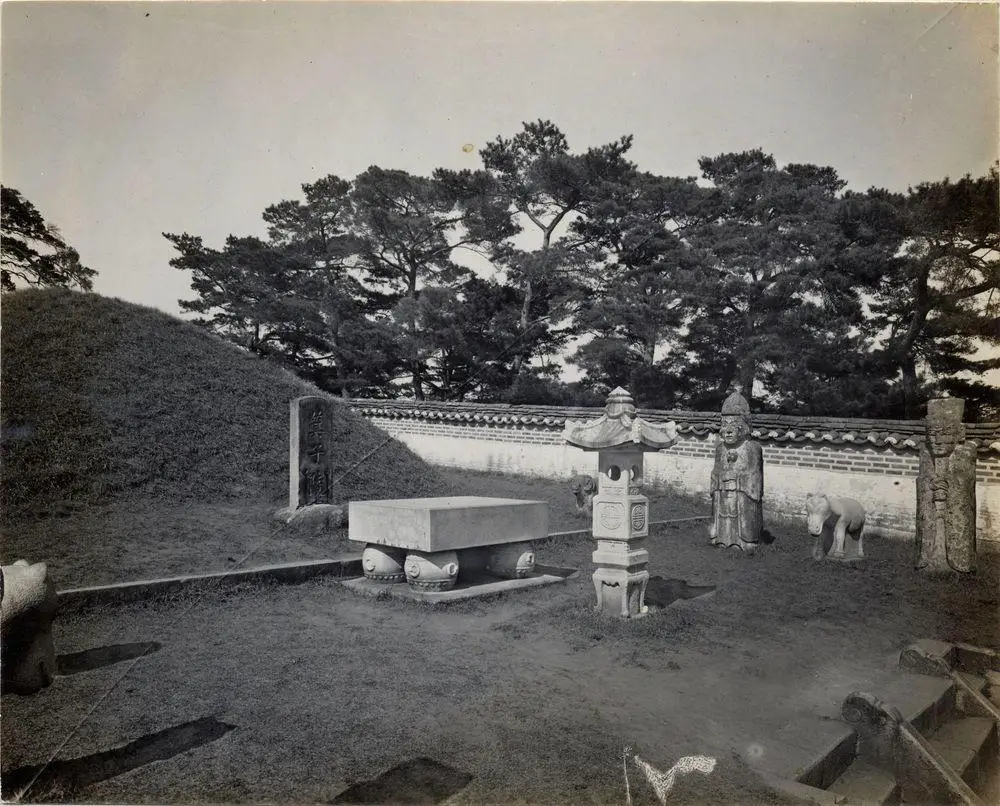
Medieval burial hill. According to legends here is buried Jizi, the legendary first ruler of ancient Gojoseon and founder of Pyongyang in the 11th century BC. Memorial temple was added next to this mound in 1102. Most likely destroyed now.
Kangso Three Tombs
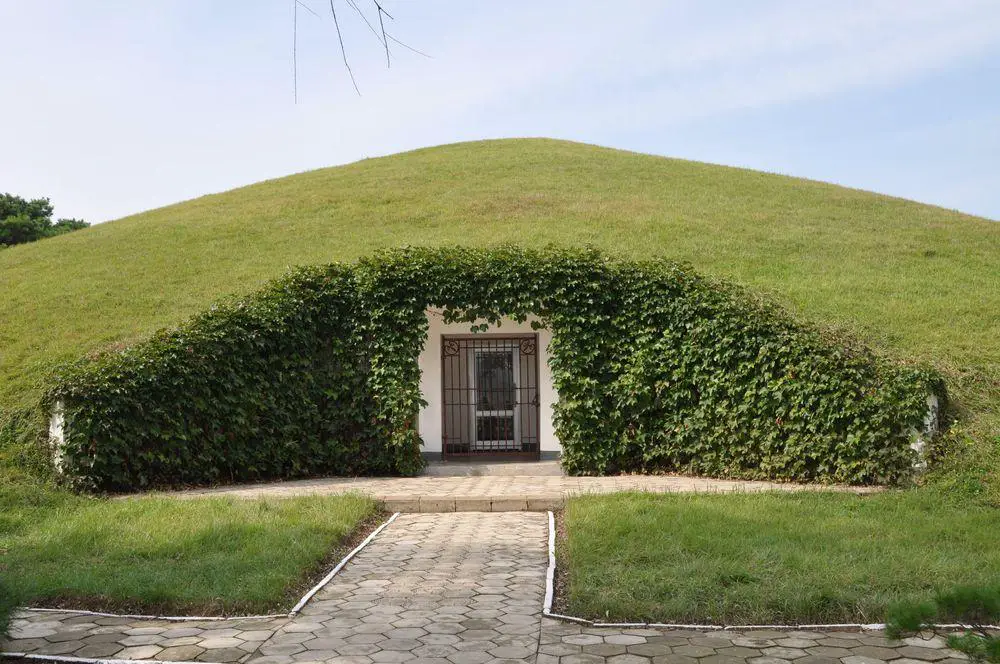
Three mounds – mausoleums from the 7th century. Contain murals that show mythical beings.
Tomb of King Muryeong
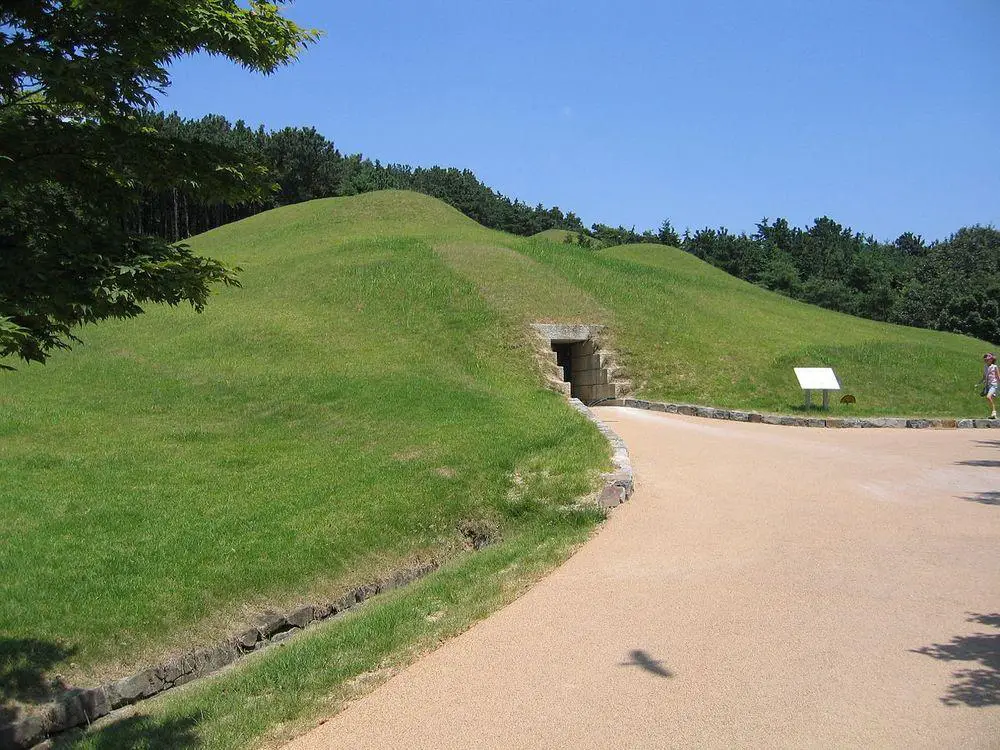
Burial of the ruler of Baekje Kingdom in 501 – 523 AD. This tomb was found intact and has been one of the most interesting archaeological discoveries in the history of South Korea.
Haman tumuli (Malisan tumuli)
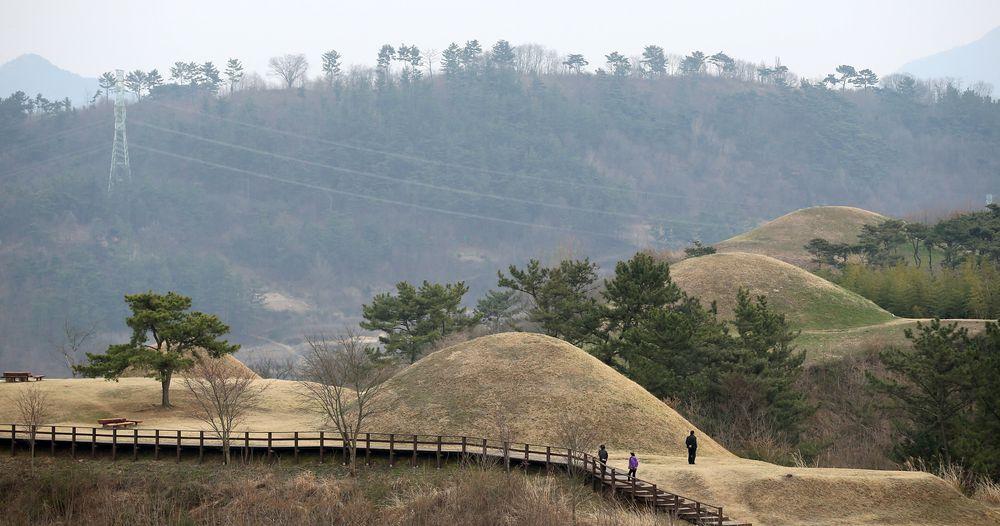
Hundreds of smaller and larger burial mounds – burials of the kings and nobleman of Gaya state.
Goryeong Jisandong Tumuli
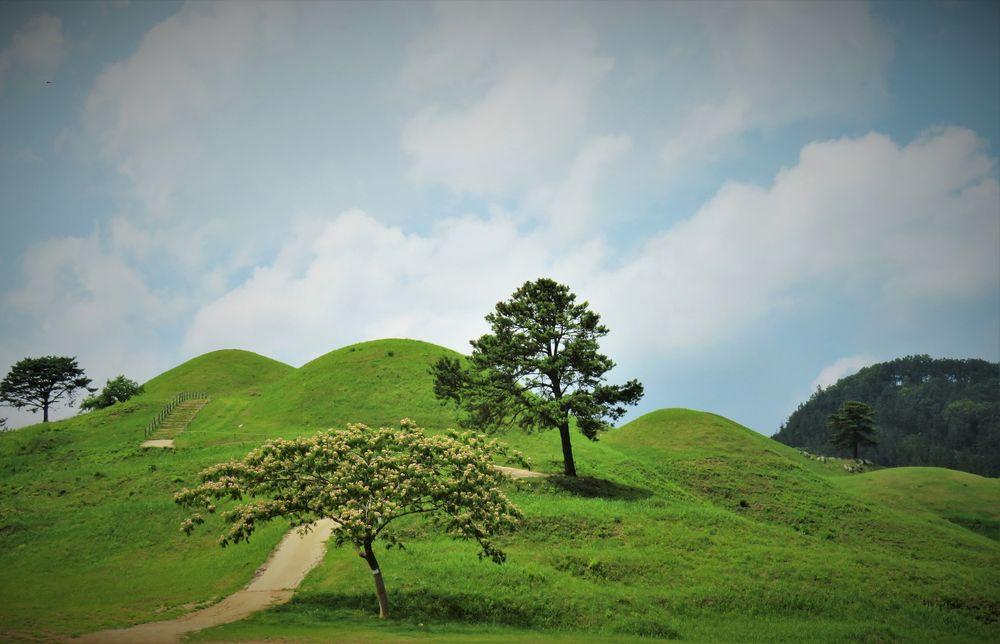
Group of nobleman’s burials from the Daegaya period, built in the 4th – 6th century AD. Thus far are known 704 burials with diverse designs.
Gold Crown Tomb (Geumgwanchong)
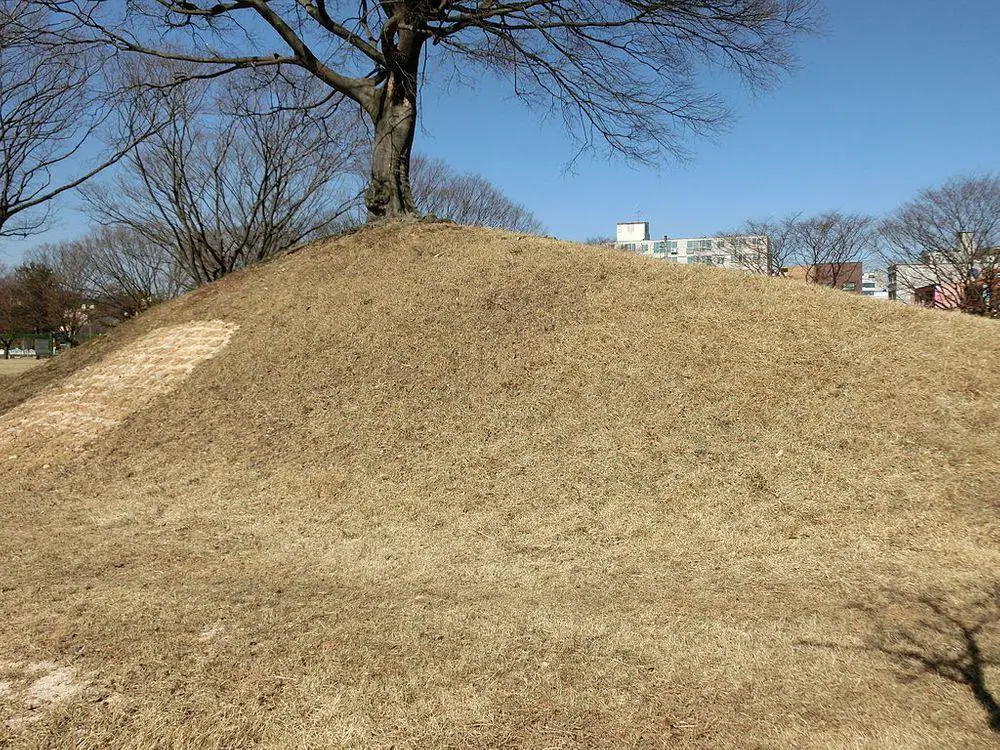
One of the Royal tombs of Gyeongju – large tumulus that was built in the 5th or 6th century AD. This tomb was very rich with treasures including very ornate golden crowns of Silla Kings. More than 40,000 artifacts have been recovered from this tomb – mostly jewelry and other precious items.
Gimhae tumuli (Daeseong-dong tumuli)
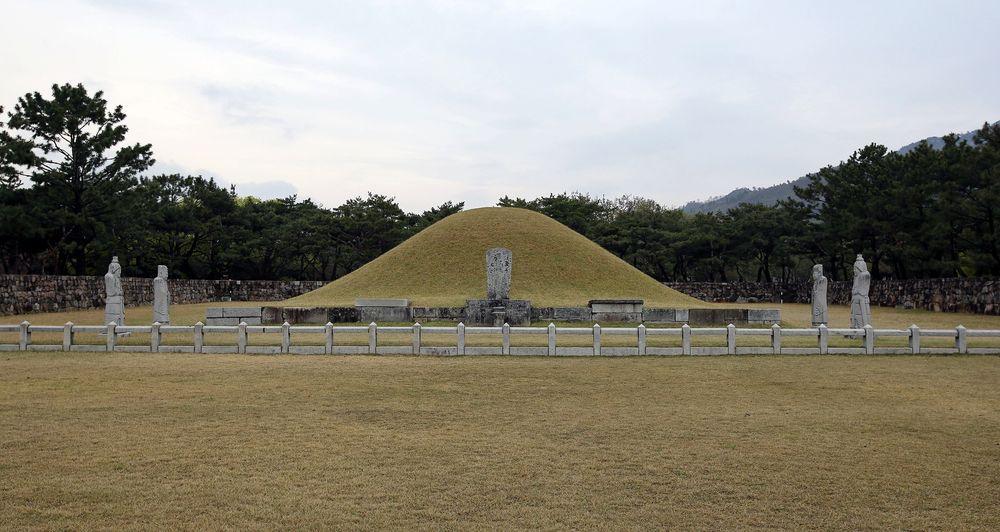
Necropolis of the kings and noblemen of Gaya state. Site contains diverse burials, most were made in the late 3rd – early 5th century AD.
Cheonmachong
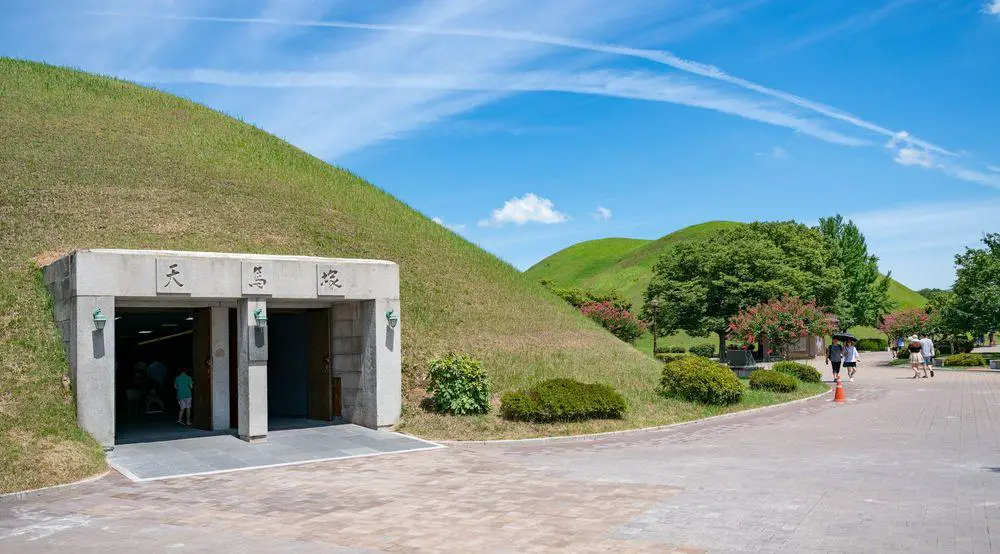
One of the Royal tombs of Gyeongju – large tumulus that was built in the 5th or 6th century AD. This 12.7 m tall artificial hill has a wood-lined passage in it. 11,500 artifacts have been recovered from this tomb. The tomb contained an interesting drawing of so-called "Korean Pegasus" – a horse with eight legs.
